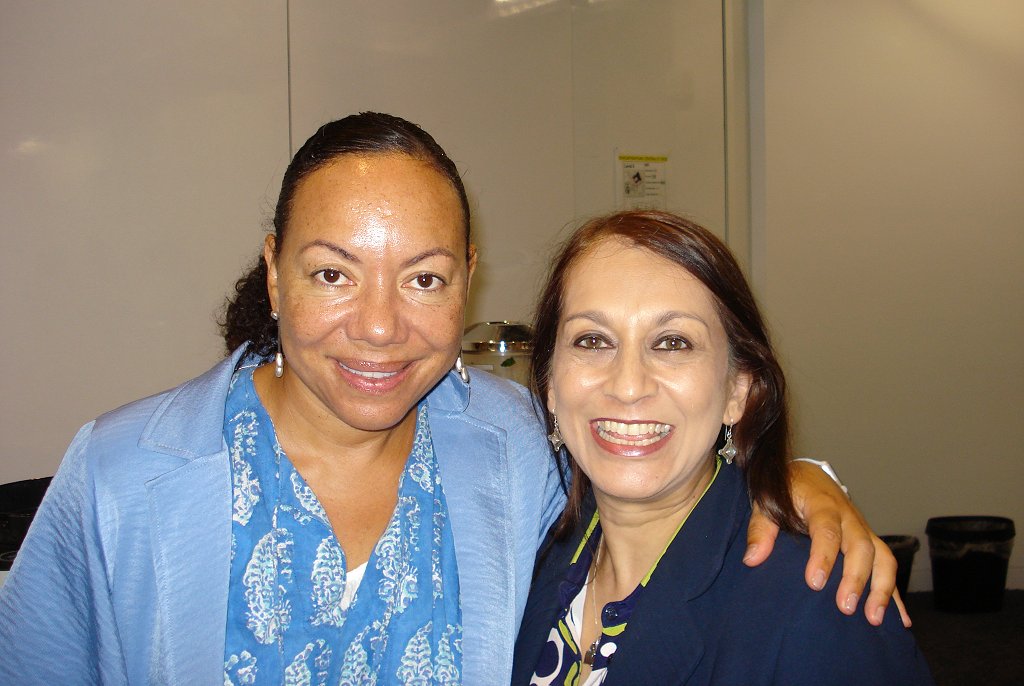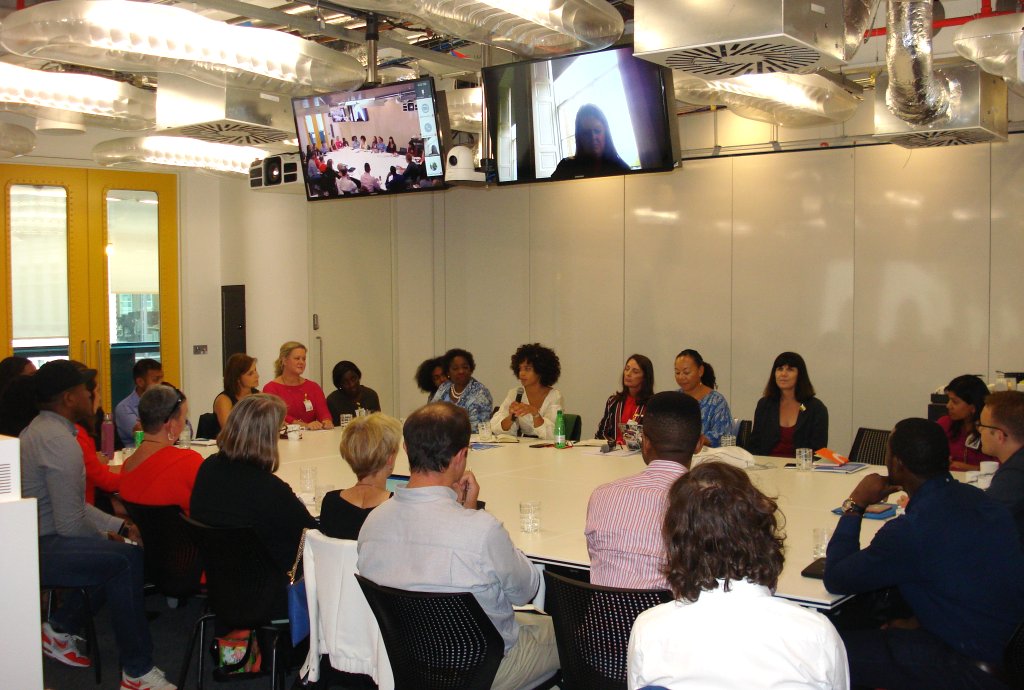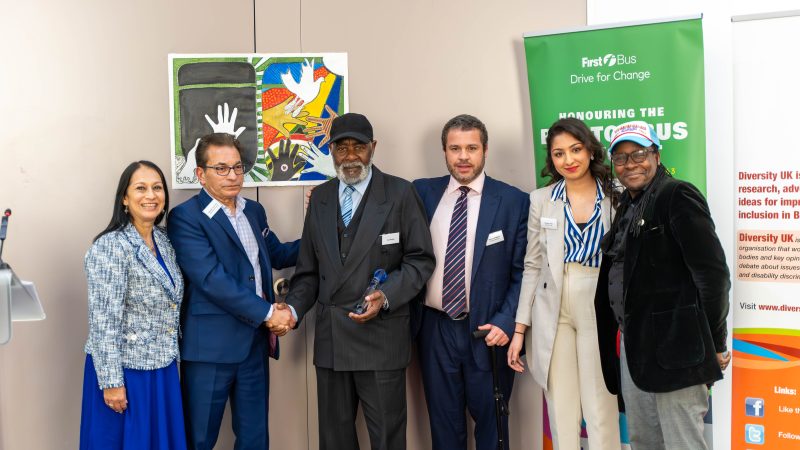Google UK hosts a Diversity & Inclusion Roundtable

Baroness Oona King, who took a leave of absence from the House of Lords in 2016 to take a role as YouTube Diversity Director, hosted a diversity & inclusion roundtable on 14th August 2018. Hosted at Google Campus in London, the purpose was for participants to discuss progress on diversity & inclusion initiatives within their sector and highlight effective working strategies and share best practice.
The roundtable was attended by Dame Sue Owen, Permanent Secretary of the Department for Digital, Culture, Media & Sport (DCMS); Catherine Mayer, Co-founder & President of the Women's Equality Party (WEP); Ruth Blanco, Communications Director of WISE - Women in Science and Engineering; Kimberley McIntosh, of race equality think tank Runnymede Trust; Dr Nike Folayan, of the Association for Black and Minority Ethnic Engineers (AfBE); Jade Bradford, from the Accessible and inclusive homes and environments; Kieron O’Reilly, Member Engagement Manager at the Employers Network for Equality & Inclusion; Martin Barnett, Manager of Google Analytics 360 Suite, EMEA at Google; Richard Cummins, 20% Global Diversity Partner at Google; Veena Marr of Russell Reynolds Associates; Sarah Luxford of Tech London Advocates Women in Tech; Lopa Patel MBE, Founder & CEO of Diversity UK; Justina Mutale, Trustee at the National Alliance of Women's Organisations (NAWO); Suki Fuller of Salaam Ventures; Mark McBride-Wright of EqualEngineers; Kirsty Livingstone of the Institute of Directors (IOD); Amali de Alwis of CodeFirst Girls and Clare Gray of The Shaw Trust, among others.

Oona King shared the Google Diversity Report 2018 which was launched by Danielle Brown, VP - Chief Diversity & Inclusion Officer at Google. Click here to download a copy of the Google Diversity Annual Report 2018.
Google Current workforce representation numbers
- Women make up 30.9% of our global workforce, and men 69.1%.
In terms of race and ethnicity (U.S. data only)
- 2.5% of Google’s workforce is Black;
- 3.6% is Hispanic/Latinx;
- 36.3% is Asian; 4.2% is multiracial (two or more races);
- 0.3% are Native American, Alaska Native, Native Hawaiian or Pacific Islander;
- 53.1% is White.
Representation for women, Black, and Latinx Googlers is similar to last year, increasing by only 0.1 percentage point (ppt) for each of these groups. However, we saw progress in several key areas:
Leadership
Google has made progress in its leadership ranks, by gender and ethnicity. Women hold 25.5% of Google’s leadership positions today. Over the last four years, the percentage of women in leadership globally has increased from 20.8% to 25.5% (+4.7 ppts).
In the U.S. in 2017, leadership hires were 5.4% Black, and Black representation in leadership increased from 1.5% in 2017 to 2% in 2018. Latinx representation in Google’s leadership is 1.8% (up from 1.7%).
Hiring
There are modest but hopeful signs of success in hiring, where its focus is on reaching greater workforce representation of women globally, and for Black and Latinx Googlers in the U.S.
In 2017, women hires in tech positions rose to 24.5% (+1 ppt), although overall hiring of women dropped from 31.4% to 31.2% (-0.2 ppts). Since 2014, women hires in tech have increased from 20.8% to 24.5% (+3.7 ppts), which shows that its focus on hiring more women into technical positions is having impact.
In 2017, overall Latinx hires increased to 4.2% (+0.4 ppts), while Latinx hires in non-Tech roles increased to 7.2% (+1.5 ppts).
Black Googler hires (3.2% of all U.S. hires) remain above current representation (2.5% of all U.S. Googlers), and hires of Black Googlers in tech positions increased from 1.9% to 2.0% (+0.1 ppt).
Attrition Index
For the first time, Google shared its weighted attrition index where the overall attrition rate is 100, and weighted attrition for each demographic group is scaled up or down accordingly. Attrition rates indicate how many employees leave a company annually. Overall, outcomes are mixed. Google’s attrition rates are lower for women globally than for men (both for women overall, and even more so for women in tech roles).
Women
Unsurprisingly, this new data shows that women of all ethnicities are less represented in Google’s workforce than men of the same ethnicity. For example, between 2014-2017 the representation of Black+ men increased 0.5 ppts (to 1.8%), whereas the representation of Black+ women increased 0.1 ppt (to 1.2%). Representation of Latinx+ men in Google’s workforce increased three times more than Latinx+ women (0.6 ppts compared to 0.2 ppts).
Our gains in women’s representation have largely been driven by White+ and Asian+ women. Representation of Asian+ women increased considerably to 12.5% of Google’s workforce, up from 10% overall in 2014 (+2.5 ppts). This is lower than increases for Asian+ men who make up 25.7% of Google, up from 21.4% in 2014 (+4.3 ppts). Among leaders, we’ve seen the most growth in representation of White+ women, who make up 16.4% of leaders, up from 14.3% in 2014 (+2.1 ppts). This is followed by increases in Asian+ men and Asian+ women in leadership, which have grown to 20% and 7.3% respectively (+1.6 ppts and +1.2 ppts). Overall, White+ men make up 52.4% of leadership down from 53.8% (-1.4 ppts) in 2017.
Equity demands the right toolkit
Google has created a place to share its learnings, best practices, and guides with a broader audience based on the research and testing it conducts on what culture and management practices work. For example, it has created guides on:
How to raise awareness about unconscious bias
Learning the science and hosting a workshop can help you understand the impact of unconscious bias and begin unbiasing.
How to evaluate subtle messages
Giving your first thoughts a second look and recognizing subtleties can help you create a more inclusive environment.
How to gather data and measure decisions
Measuring programs and decisions can demonstrate impact and reveal where unconscious bias may negatively influence outcomes.
How to eliminate bias when reviewing resumes
Screening for qualifications, consistency, and impact can help you match candidates to the right roles and make better decisions.
How to structure and check for pay equity
Designing and auditing fair pay practices are steps organizations everywhere can take to create more equitable workplaces.
How to use structure and criteria
Using consistent structure and clear criteria can lead to more objective decisions.
To explore Google’s Diversity & Inclusion Toolkit, visit https://diversity.google/insights/




